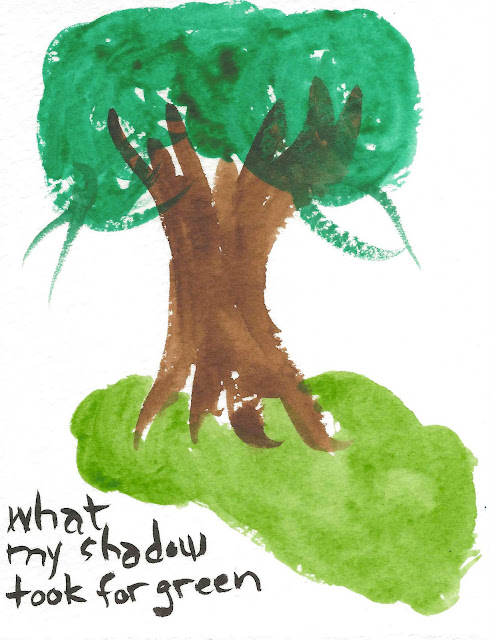135. The Form of Children
The little fences that surround
a life, the little children that play
within them, these small stones
they hold in their tiny white fists.
Listen closely enough to a child
and its breathing and you will hear
that it is a language that tells us
about the child. A child speaks
through her breathing and moving,
by means of looking, after the fashion
of the day and the night, whether
meaning to or not, when sleeping.
Gauzy dress of lace and light or
the girl is on her knees with mud
through it and prepared to go
forward until it ends, or the child
shows us she is fashioned of braces,
lashed poles, the subterranean flow
of cave’s cold water, a girl whose nose
points in what direction she’ll go.
Tiny sunrise overwhelms the maples,
still green but going into brighter
colors, and the child dreams of water
at her ankles because she believes
her ankles breathe and will blow
bubbles through the water and,
in that way, extend the sky, which
she looks up to with closed eyes.
Through eyelids is the best viewing,
unobstructed by objects, the best way
to understand the world, or so she
thinks because she thinks best
in her own head, where there are
sounds, like her mother talking
to her, but not you yourself, only
the afterimage, the after-echo of
you talking her back into the world
as she talks you out of it, and at
the point where you realize
no-one needs to be right, you will
feel the effects of her breathing
upon your neck, but not her breathing
itself, and you will know what
it is your child is telling you to do.
A daughter is a way of thinking
about yourself, and the way you breathe
tells us so, the way of breathing is what
makes the little fences sit in their
rows and squares, little white fences
the dog might squeeze through, and
the sense that there is not enough
sunlight when it rains, that the air
seems heavier at night, that a fence
doesn’t hold a child in the way that
your arms do, the way that your ears
listen to the breathing as much as for.
Hearing poetry is an unnatural act
not unlike aging, so it is that we
imagine it takes the form of children,
though sometimes of children asleep,
so it is that we take to it unconsciously,
the body merely accepting it without
understanding the possibility that choice
affords, without taking the sound fully in.
a life, the little children that play
within them, these small stones
they hold in their tiny white fists.
Listen closely enough to a child
and its breathing and you will hear
that it is a language that tells us
about the child. A child speaks
through her breathing and moving,
by means of looking, after the fashion
of the day and the night, whether
meaning to or not, when sleeping.
Gauzy dress of lace and light or
the girl is on her knees with mud
through it and prepared to go
forward until it ends, or the child
shows us she is fashioned of braces,
lashed poles, the subterranean flow
of cave’s cold water, a girl whose nose
points in what direction she’ll go.
Tiny sunrise overwhelms the maples,
still green but going into brighter
colors, and the child dreams of water
at her ankles because she believes
her ankles breathe and will blow
bubbles through the water and,
in that way, extend the sky, which
she looks up to with closed eyes.
Through eyelids is the best viewing,
unobstructed by objects, the best way
to understand the world, or so she
thinks because she thinks best
in her own head, where there are
sounds, like her mother talking
to her, but not you yourself, only
the afterimage, the after-echo of
you talking her back into the world
as she talks you out of it, and at
the point where you realize
no-one needs to be right, you will
feel the effects of her breathing
upon your neck, but not her breathing
itself, and you will know what
it is your child is telling you to do.
A daughter is a way of thinking
about yourself, and the way you breathe
tells us so, the way of breathing is what
makes the little fences sit in their
rows and squares, little white fences
the dog might squeeze through, and
the sense that there is not enough
sunlight when it rains, that the air
seems heavier at night, that a fence
doesn’t hold a child in the way that
your arms do, the way that your ears
listen to the breathing as much as for.
Hearing poetry is an unnatural act
not unlike aging, so it is that we
imagine it takes the form of children,
though sometimes of children asleep,
so it is that we take to it unconsciously,
the body merely accepting it without
understanding the possibility that choice
affords, without taking the sound fully in.


Comments
Post a Comment